In 1967, the Royal Air Force first showed off its Harrier “Jump Jet.” It was a cutting-edge aircraft that was capable of vertical/short takeoff and landing operations (VSTOL). The Harrier would go on to be one of the most revolutionary designs of the 20th century, while it saw service for three and a half decades.
The Soviet Union responded by attempting to develop a similar aircraft, and the result was the Yak-38 (NATO reporting name “Forger”). Though it attempted to fulfill roughly the same role as the Harrier, it had numerous shortcomings, which prevented the aircraft from reaching a greater operational service career. It became the first and, more importantly, last VSTOL aircraft developed by the Kremlin.
Origins of the Yak-38
Since the Second World War, military planners had considered the advantages of VSTOL aircraft, which could take off and land vertically or on short runways. The British military began the development of the Harrier from lessons learned in the Korean War, and by the late 1960s, it emerged as the only truly successful VSTOL design of the era.
Moscow also saw the potential for such a warplane for its aircraft cruisers, and the A.S. Yakovlev Design Bureau JSC was charged with developing a Soviet VSTOL. Whereas the Harrier had begun essentially as a clean slate, the Yak-38 was developed from the land-based experimental demonstrator Yakovlev Yak-36. In the end, the two shared little in common – yet, it is evident that the Soviets were forced to make numerous compromises.
Unlike the single-engine Harrier, the Yak-38 was equipped with a Tumansky R-28 V-300 engine used for vector thrust and regular flight, as well as a pair of Rybinski RD-38 turbojets in the front of the aircraft purely for vector thrust assistance.
It was as complicated as it sounds.
It took some five years and four prototypes to eventually incorporate the functional thrust vectoring system that supported the vertical takeoff. To reduce weight, the aircraft’s designers also removed the radar and reduced the fuel capacity. Though faster than the Harrier, it lacked the range, and the Yak-38 also required an experienced pilot to operate the aircraft as it wasn’t easy to fly.
It proved far from a perfect solution, and during testing in Afghanistan, it was discovered that the fighter kicked up so much dirt, dust, and debris that it threatened to clog up the engines, while it was also a potential hazard to anyone in the vicinity.
Its only use in combat also occurred in the Soviet-Afghanistan War, when it was deployed in around a dozen sorties with no notable actions recorded. Part of the issue was that it had a range of just 320 km (200 miles). In addition to lacking radar, it was equipped with just four hardpoints, along with the capacity to carry up to 4,400 pounds of ordnance. Its weak weapons loadout typically included Kh-23 air-to-surface missiles and R-60 air-to-air missiles.
It thus lacked the payload and armament potential to have any meaningful battlefield role – while its limited range meant it was utterly unable to serve as a tool of Soviet naval power projection. Though some 230 were produced, its service history was underwhelming.
The SVTOL aircraft was retired in 1991 – essentially dying with the Soviet Union.
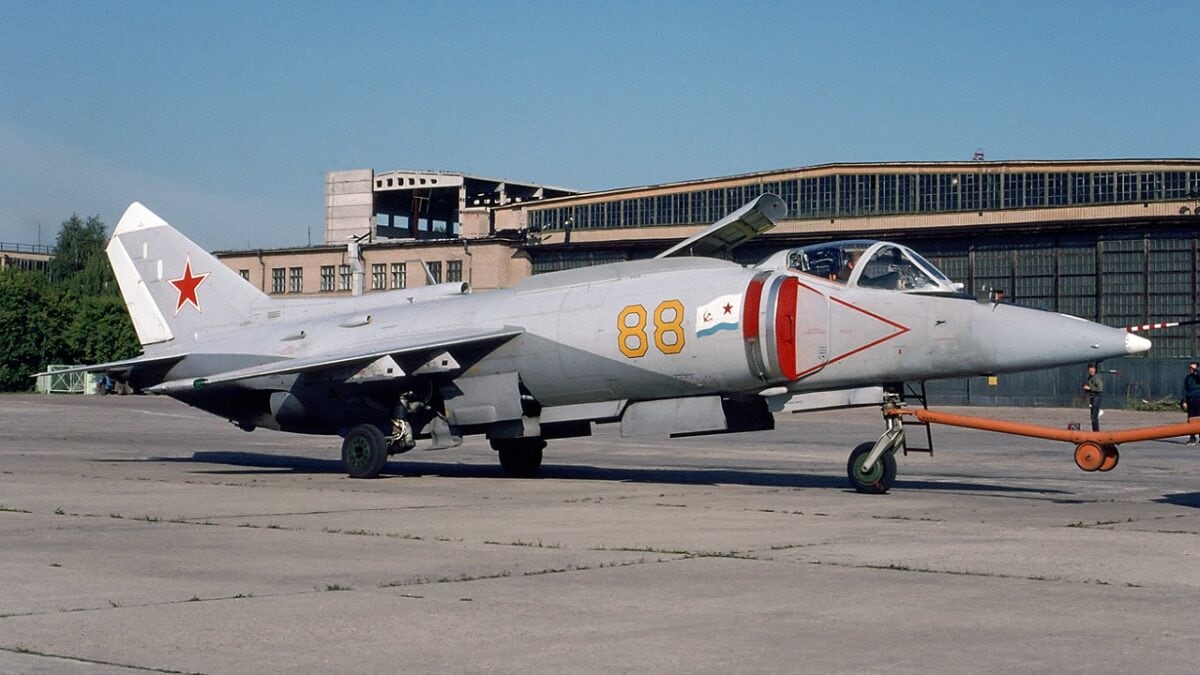
Yak-38: Only 50 of these VTOL-jets were built. This year (1993) was the last year they were in active service.
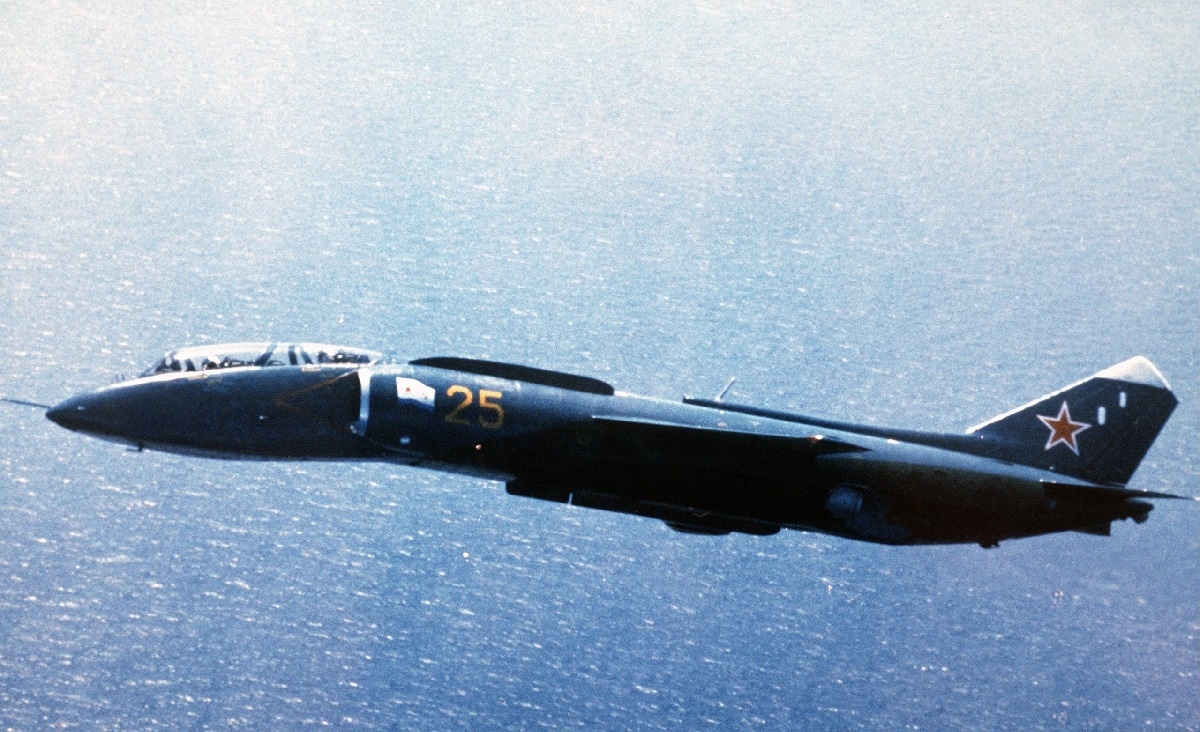
An air to air left side view of a Soviet Yak-38U Forger trainer aircraft.
By contrast, the Harrier was noted for its use in the Falklands War, where it helped the Royal Navy maintain control of the skies and seas, and later was deployed in the conflicts in Iraq and Afghanistan. That is why the Harrier will be remembered as a legendary aircraft – and even became a favorite with Hollywood – while the Yak-38 is at most a footnote in aviation history.
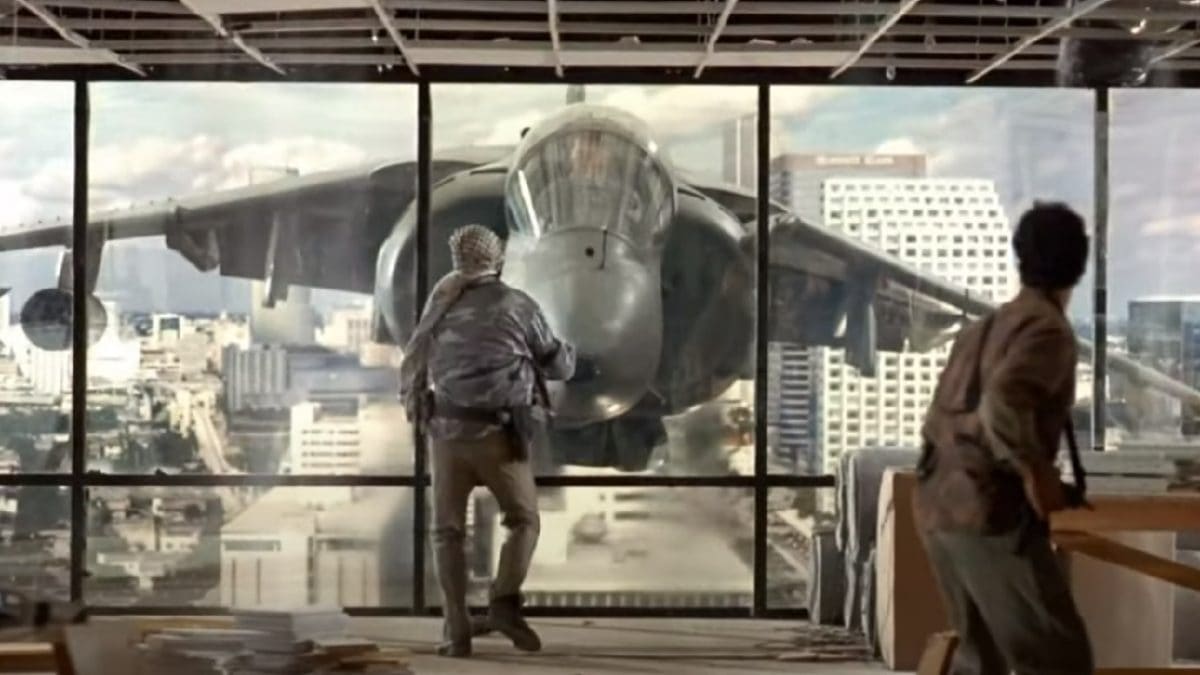
Harrier Jet from True Lies. Image Credit: True Lies Movie Screenshot.
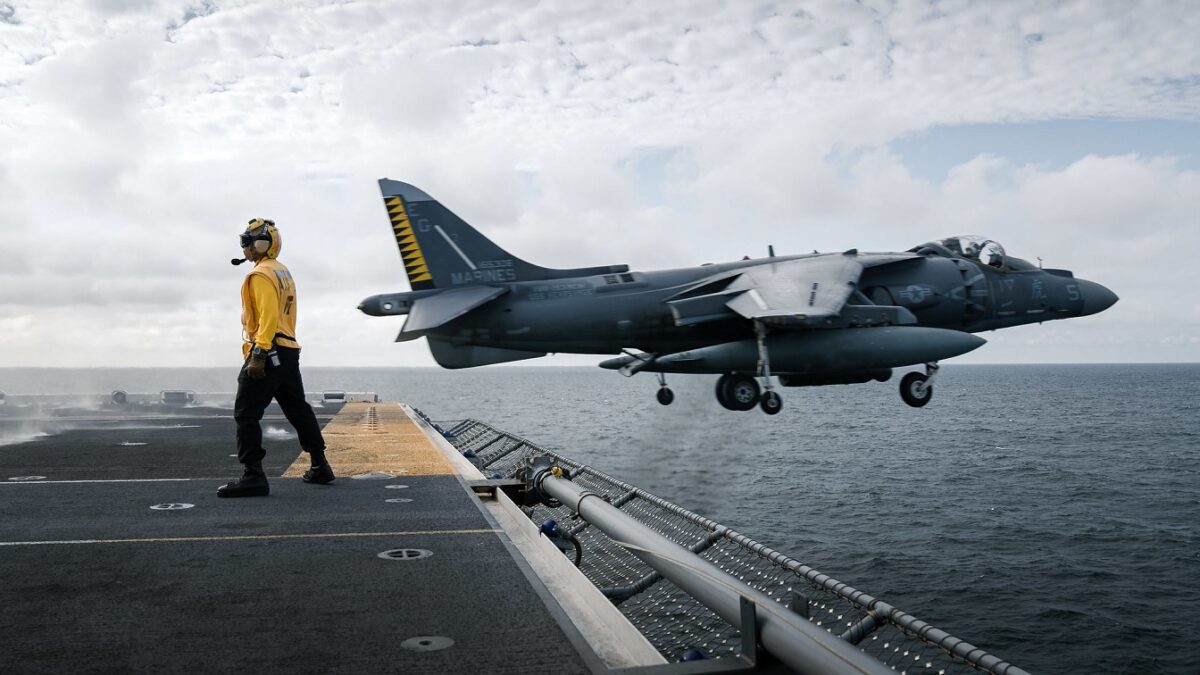
BALTIC SEA (Aug. 24, 2022) A U.S. Marine Corps AV-8B Harrier attached to the 22nd Marine Expeditionary Unit (MEU) flies past U.S. Navy Aviation Boatswain’s Mate (Handler) 1st Class Tu N. Chau during flight operations aboard the Wasp-class amphibious assault ship USS Kearsarge (LHD 3), Aug. 24, 2022. The Kearsarge Amphibious Ready Group and embarked 22nd MEU, under the command and control of Task Force 61/2, is on a scheduled deployment in the U.S. Naval Forces Europe area of operations, employed by U.S. 6th Fleet to defend U.S., allied and partner interests.
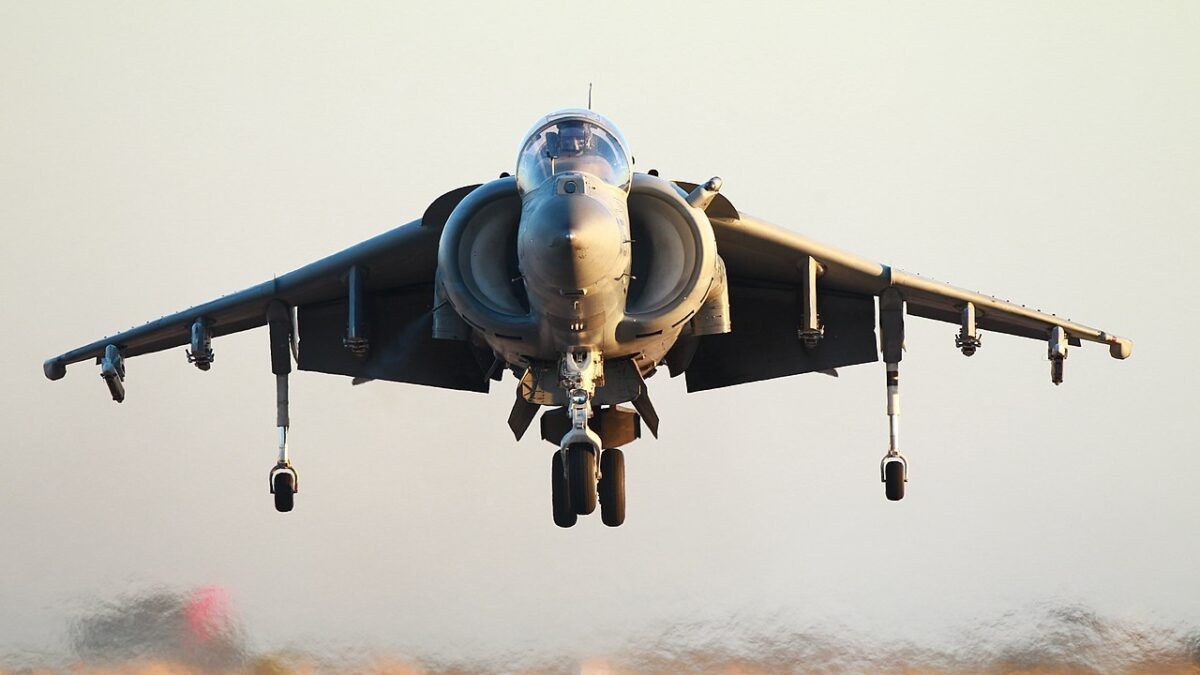
An AV-8B Harrier hovers over the flight line during the Marine Corps Community Services (MCCS) sponsored annual Air Show on Marine Corps Air Station (MCAS) Miramar, San Diego, Calif., Oct. 13, 2012. The MCAS Miramar Air Show showcases not only the aerial prowess of the Armed Forces but their appreciation of the community’s support and dedication to the troops. (U.S. Marine Corps photo by Cpl. Jamean Berry/Released)

A Sea Harrier FA2 of 801 Squadron is seen hovering above the deck of HMS Illustrious. 801 Naval Air Squadron (NAS) was the last Fleet Air Arm squadron to operate the Sea Harrier FA2. After a very successful drawdown and decommissioning ceremony, the final Sea Harrier was withdrawn from service on 31 March 2006 at RNAS Yeovilton and the Squadron disbanded. 801 NAS will be recommissioned in October 2006, to operate the Harrier GR7 and GR9 from RAF Cottesmore. 801 NAS will be joining the recently commissioned 800 NAS as well as 1 and IV (AC) Sqns RAF to complete the formation of Joint Force Harrier (JFH). Organization: Royal Navy Object Name: VL05_0420_065 Keywords: 801 NAS, HMS Illustrious , FA2, Sea Harrier, Joint Force Harrier, Aircraft carrier, Sunshine Country: UK
A Senior Editor for 19FortyFive, Peter Suciu is a Michigan-based writer. He has contributed to more than four dozen magazines, newspapers, and websites with over 3,000 published pieces over a twenty-year career in journalism. He regularly writes about military hardware, firearms history, cybersecurity, and international affairs. Peter is also a Contributing Writer for Forbes and Clearance Jobs. You can follow him on Twitter: @PeterSuciu.

